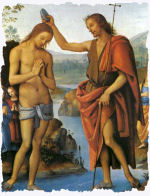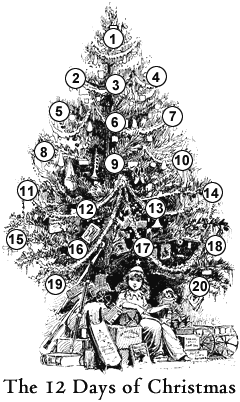----- Forwarded Message -----
From: Raymond ...
....
Sent: Sunday, 13 January 2013, 14:22
Subject: Baptism of the Lord
From: Raymond ...
....
Sent: Sunday, 13 January 2013, 14:22
Subject: Baptism of the Lord
BAPTISM OF THE LORD 2005
This particular mystery of our faith, the Baptism of the Lord in the Jordan by John has been given a new emphasis in our own day. This came about by it being recently included in the new “Mysteries of Light” of the Rosary. Significantly too, that other mystery that makes up the Trilogy of Epiphany events of Christ’s Life: The changing of water into wine at the marriage Feast at Cana - that was also included in the new Mysteries of Light.
No doubt we could also interpret many other events in Christ’s life, particularly his Transfiguration on the mountain top, as being Epiphanies in their own way. Each of them manifesting something of who or what the Christ was to the world.
But the Liturgical Tradition of the Church has good reason to select these three great public events the Visit of the Magi, the Baptism in the Jordan, and First miracle at Cana as being of outstanding significance, not least of all precisely because of their public nature.
The Visit of the Magi, of course, still holds pride of place in popular piety, as being the Epiphany, the manifestation of Christ as the Saviour not just of the Jews but of all men, of all times and of all places.
The Miracle of Cana we might interpret as manifesting to the whole world Mary’s powerful role in the work of her Divine Son: where the first Eve tempted the first Adam and was to a great extent responsible for his sin, so Mary, the new Eve, dare we say, ‘tempted’ or perhaps better, ‘persuaded’ Christ, the New Adam, to step out of line, as it were and anticipate the time for beginning his mission and thus we see that she too plays a very responsible role in that mission.
But now, to come to today’s item from that sacred Trilogy: the Baptism of Christ in the Jordan; What is it that is “Epiphany” there? What is it that is manifested to us about Christ there? What is it that is manifested, not by the Magi, nor even by Mary his Mother, but by his heavenly Father Himself? If anything is manifest it is surely the fact that it is something that seems so very unfitting, something very out of place. Certainly that is how it struck John the Baptist. “It is I who need baptism from you! Yet you come to me!. We can only agree with him that it seems unthinkable that the Child that was called ‘Holy’ and ‘Son of God’ should need the washing of water and purification.
Yet it is precisely here that the heart of this mystery lies, and it is precisely at this moment that the Father chooses to let his voice be heard from heaven proclaiming: “This is my Beloved Son in whom I am well pleased”.
Let us note too that it is not his Son as the Eternal Word whom he is proclaiming. Nor is it even his Son as the Word Incarnate whom he is proclaiming, but it is Jesus precisely as taking our sins upon himself whom he is proclaiming as being so pleasing to him.
What encouragement there is for us in those words of the Eternal Father then. It is Jesus at his poorest, Jesus at his most unattractive, Jesus at his most repugnant, Jesus as his ‘most-like-us’, who is proclaimed beloved of his Father.
From this interpretation of the Father’s words we might say that this is the most fitting time in Christ’s life for him to speak them. In themselves these words belong more properly to the scene where Christ hangs in agony on the Cross, a thing despised and rejected by men; a thing without beauty, without form; but if they had been spoken then they would have taken away from the utter desolation and abandonment which are so essential to that scene. Likewise when similar words were uttered by the Father at the Transfiguration they were spoken of the Glorious Christ, of whom the Father could be so proud, as it were, and they were directed to the Apostles, not to his Son. whereas, at the Baptism they were an intimate word spoken to his Son himself. “My Son, I love you.”
This then is indeed the perfect moment for us to hear that cry from heaven: “You are my beloved Son in whom I am well pleased”; and in that cry we find our understanding of Christ and of his identification with us and of our own identification with him before the Father. They are world shaking and heaven shaping words; words of supreme comfort and encouragement.


 Today we celebrate the baptism of Christ in the Jordan. This is the second epiphany, or manifestation, of the Lord. The past, the present, and the future are made manifest in this epiphany.
Today we celebrate the baptism of Christ in the Jordan. This is the second epiphany, or manifestation, of the Lord. The past, the present, and the future are made manifest in this epiphany.




